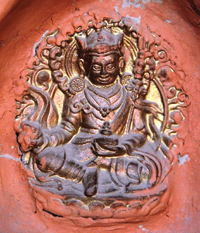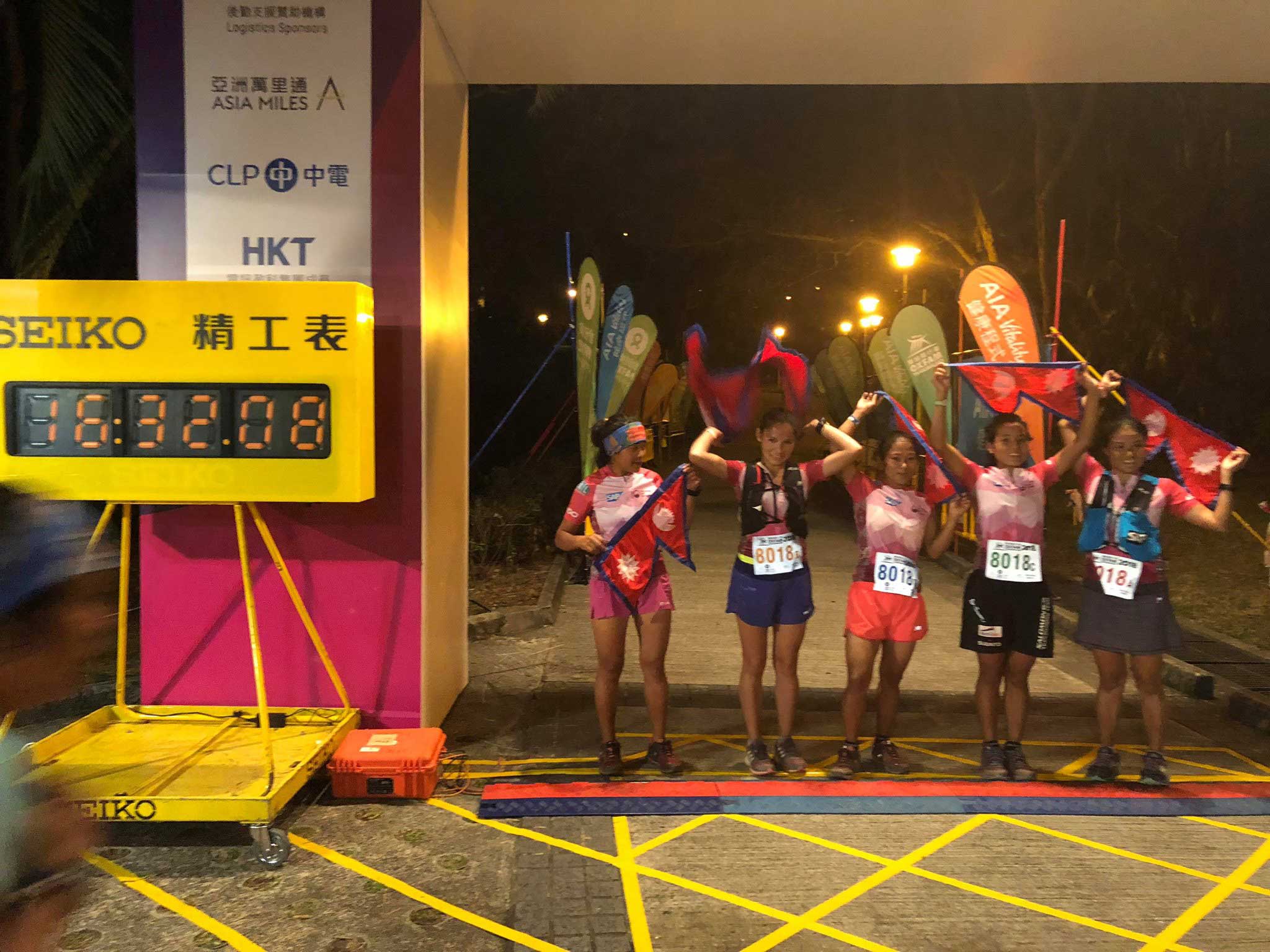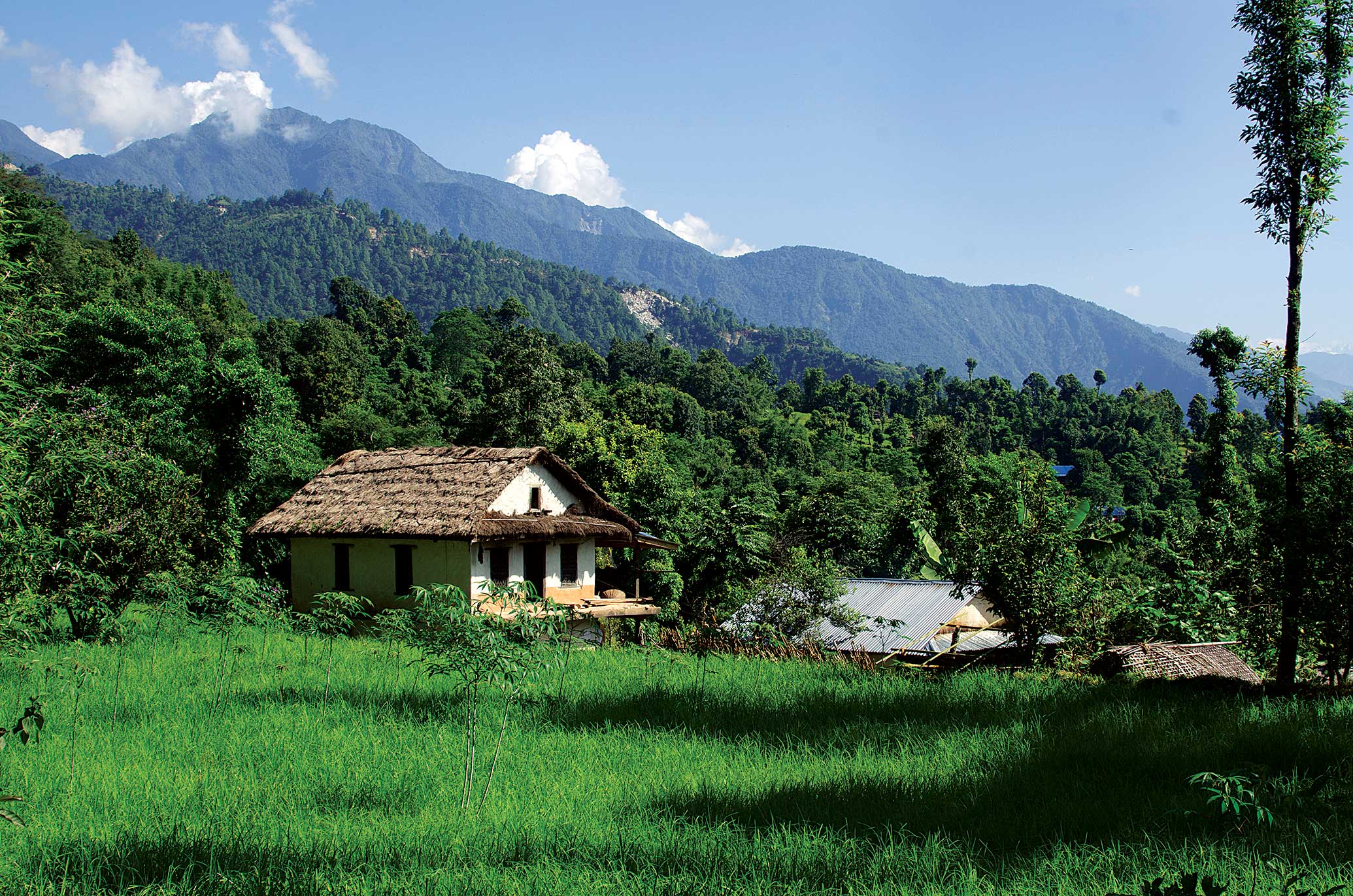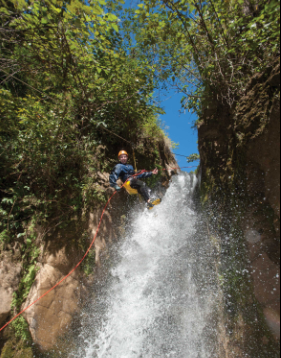While trekking in upper Mustang recently, Joe Whittington (our guest essayist), with four other trekkers and a guide, set off to see the remarkable Chyungsi Rangchung Cave Monastery (Gompa). The route to the cave took them away from the main trail between Syangbochen and Samar villages. What they saw at the cave was remarkable... Afterward they climbed steeply up out of the canyon to rejoin the main trail and their companions at Samar. -DM
On Saturday, four other trekkers and I set off with Santosh, our guide, to see the Chyungsi Gompa. As the rest of our group walked the main trail to Samar (our night stop), we descended into a narrow canyon created by the Syangbochen Khola (river). All around us were high sandstone walls and towering pillars. Like other areas in Mustang, the soft sandstone is easily dug out to create caves, and many of these were in evidence though they did not appear to have been occupied recently. Higher up were numerous Himalayan Griffon nests, identifiable by the white droppings below the entrances. A few Griffons circled above the canyon, but we saw no activity at the nests. (Nesting season is late winter to early spring, with eggs typically laid in January and hatched in March.)
 Near the bottom of the canyon we ascended a steep trail up to the right (west) to access the Rangchung Cave. The area is festooned with multiple strings of prayer flags. The rushing stream provided a pleasant sound as we climbed the many stone steps to the cave. The cave opening is mostly closed off by walls of stacked reddish stone. The caretaker has a garden near the entrance planted with corn, beans, and squash and flowers. There is also a friendly Tibetan mastiff.
Near the bottom of the canyon we ascended a steep trail up to the right (west) to access the Rangchung Cave. The area is festooned with multiple strings of prayer flags. The rushing stream provided a pleasant sound as we climbed the many stone steps to the cave. The cave opening is mostly closed off by walls of stacked reddish stone. The caretaker has a garden near the entrance planted with corn, beans, and squash and flowers. There is also a friendly Tibetan mastiff.
The caretaker appeared to be mute, but Santosh was able to communicate with him in a form of sign language. He seemed happy to have visitors, and rupees in the donation box clearly perked him up. Two of our group gave him a scarf and a pair of gloves which also pleased him.
We entered the cave on small steps cut/worn into the stone. It was very dusty, dark, and steep. You could definitely take a tumble with a misstep. We ascended up past rock formations and circled around to the right. There are mani (prayer) inscriptions carved on the walls, some painted tankas (scroll paintings), and face-like projections stained black from handprints. The rock formations resemble stalagmites and stalactites. There are also several small chortens made of clay with white painted features, and a large clay panel with tens of imbedded gold images.
On a wooden shelf, photos of the Sakya Trizin are displayed, plus the following hand-printed statement:
Do nothing harmful,
Do only what is good
Discipline your own mind.
This is the Teaching of the Buddha. “Sarvamangha Lam”
Sarva Mangalam is a Sanskrit mantra meaning "Happiness to Everyone" and is meant to be chanted in six directions: north, south, east, west, nadir and zenith.
Other features of the cave include a table of butter lamps, the caretaker’s sleeping mat and kitchen area, and a small room that the caretaker (proudly) opened up to show us many brass bowls, lamps, and other ritual items, prayer wheels, and lots of prayer flags.











